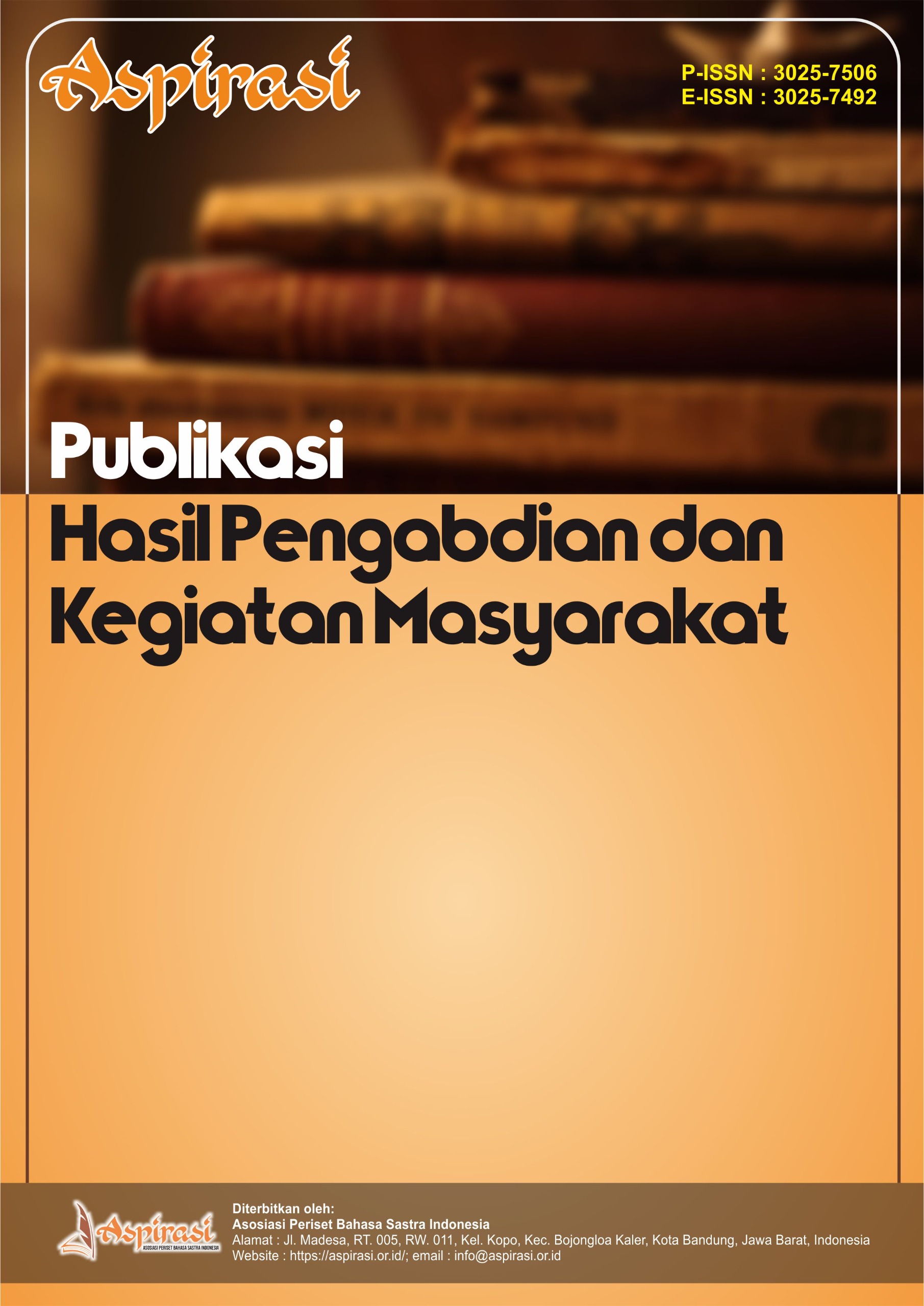Pemberdayaan Guru melalui Pelatihan Pemanfaatan Kecerdasan Buatan (AI) untuk Meningkatkan Kualitas Pembelajaran di Era Digital
DOI:
https://doi.org/10.61132/aspirasi.v3i1.1379Keywords:
AI Training, Teachers, Training of Trainer, LearningAbstract
The development of competent human resources (HR) is a top priority for improving the quality of life in society. In education, teachers' ability to enhance their skills is key to successful learning. However, many teachers struggle to adapt teaching methods to the demands of the digital era, especially in utilizing Artificial Intelligence (AI) technology. AI offers innovative solutions such as personalized learning and adaptive platforms that enhance the effectiveness of teaching and learning processes. This study examines the implementation of AI-based learning models and teacher training programs in Muhammadiyah schools in Semarang. Using the Training of Trainer (ToT) approach, the program equips teachers with skills such as using adaptive learning tools and AI-based evaluation systems. The study employs a mixed-methods approach involving practical training and result evaluation. The findings reveal improved digital literacy and confidence among teachers in using AI for interactive learning. In conclusion, AI has great potential to transform education, but its success depends on comprehensive, ethical, and sustainable strategies. The ToT program serves as a strategic step to empower teachers to face educational challenges in the digital era.
Downloads
References
Chounta, I. A., Bardone, E., Raudsep, A., & Pedaste, M. (2022). Exploring teachers’ perceptions of artificial intelligence as a tool to support their practice in Estonian K-12 education. International Journal of Artificial Intelligence in Education, 32(3), 725–755. https://doi.org/10.1007/s40593-021-00243-5
Darling-Hammond, L., Flook, L., Cook-Harvey, C., Barron, B., & Osher, D. (2020). Implications for educational practice of the science of learning and development. Applied Developmental Science, 24(2), 97–140. https://doi.org/10.1080/10888691.2018.1537791
Duarte, N., Pérez, Y. M., Beltrán, A., & García, M. B. (2023). Use of artificial intelligence in education: A systematic review. https://doi.org/10.46254/sa04.20230169
Fernández Morante, C., López, B., Iglesia, J., & Miranda, M. (2014). State of the art of ICT integration in European schools educational systems: Equipment-uses-teachers competences.
Fink, M. C., Robinson, S. A., & Ertl, B. (2024). AI-based avatars are changing the way we learn and teach: Benefits and challenges. Frontiers in Education, 9. https://doi.org/10.3389/feduc.2024.1416307
García-Tudela, P. A., Prendes-Espinosa, P., & Solano-Fernández, I. M. (2021). Smart learning environments: A basic research towards the definition of a practical model. Smart Learning Environments, 8(1). https://doi.org/10.1186/s40561-021-00155-w
Hill, J., Randolph Ford, W., & Farreras, I. G. (2015). Real conversations with artificial intelligence: A comparison between human-human online conversations and human-chatbot conversations. Computers in Human Behavior, 49, 245–250. https://doi.org/10.1016/j.chb.2015.02.026
Holmes, W., Anastopoulou, S., Schaumburg, H., & Mavrikis, M. (2018). Technology-enhanced personalised learning: Untangling the evidence. Open Research Online, August, 116. http://www.studie-personalisiertes-lernen.de/en/
Holmes, W., Maya, B., & Fadel, C. (2019). Artificial intelligence in education: Promises and implications for teaching. Journal of Computer Assisted Learning, 14(4), 251–259. https://onlinelibrary.wiley.com/doi/10.1046/j.1365-2729.1998.1440251.x
Hutchison, D. (2009). Automated essay scoring systems. In Handbook of research on new media literacy at the K-12 level: Issues and challenges (Vol. 2). https://doi.org/10.4018/978-1-60566-120-9.ch048
Ido Roll, & Wylie, R. (2021). Evolution and revolution in artificial intelligence in education. International Journal of Artificial Intelligence in Education, 31(4), 1058–1083.
Igbokwe, I. C. (2023). Application of artificial intelligence (AI) in educational management. International Journal of Scientific and Research Publications, 13(3). https://doi.org/10.29322/ijsrp.13.03.2023.p13536
Linan, L. C., & Perez, A. A. J. (2015). Educational data mining and learning analytics: Differences, similarities, and time evolution. RUSC. Universities and Knowledge Society Journal, 12(3), 98–112.
Liu, M. (2023). Exploring the application of artificial intelligence in foreign language teaching: Challenges and future development. SHS Web of Conferences, 168, 03025. https://doi.org/10.1051/shsconf/202316803025
Luckin, R., & Holmes, W. (2016). Intelligence unleashed: An argument for AI in education. UCL Knowledge Lab: London, UK. https://www.pearson.com/content/dam/corporate/global/pearson-dot-com/files/innovation/Intelligence-Unleashed-Publication.pdf
Ma, Q., Crosthwaite, P., Sun, D., & Zou, D. (2024). Exploring ChatGPT literacy in language education: A global perspective and comprehensive approach. Computers and Education: Artificial Intelligence, 7. https://doi.org/10.1016/j.caeai.2024.100278
Papamitsiou, Z., & Economides, A. A. (2014). Learning analytics and educational data mining in practice: A systemic literature review of empirical evidence. Educational Technology and Society, 17(4), 49–64.
Selwyn, N. (2020). Should robots replace teachers? AI and the future of education. In John Wiley & Sons (Vol. 3, Issue 2).
Winkler, R., & Soellner, M. (2018). Unleashing the potential of chatbots in education: A state-of-the-art analysis. Academy of Management Proceedings, 2018(1), 15903. https://doi.org/10.5465/ambpp.2018.15903abstract
Zawacki-Richter, O., Marín, V. I., Bond, M., & Gouverneur, F. (2019). Systematic review of research on artificial intelligence applications in higher education – Where are the educators? International Journal of Educational Technology in Higher Education, 16(1). https://doi.org/10.1186/s41239-019-0171-0
Downloads
Published
How to Cite
Issue
Section
License
Copyright (c) 2025 ASPIRASI : Publikasi Hasil Pengabdian dan Kegiatan Masyarakat

This work is licensed under a Creative Commons Attribution-ShareAlike 4.0 International License.





